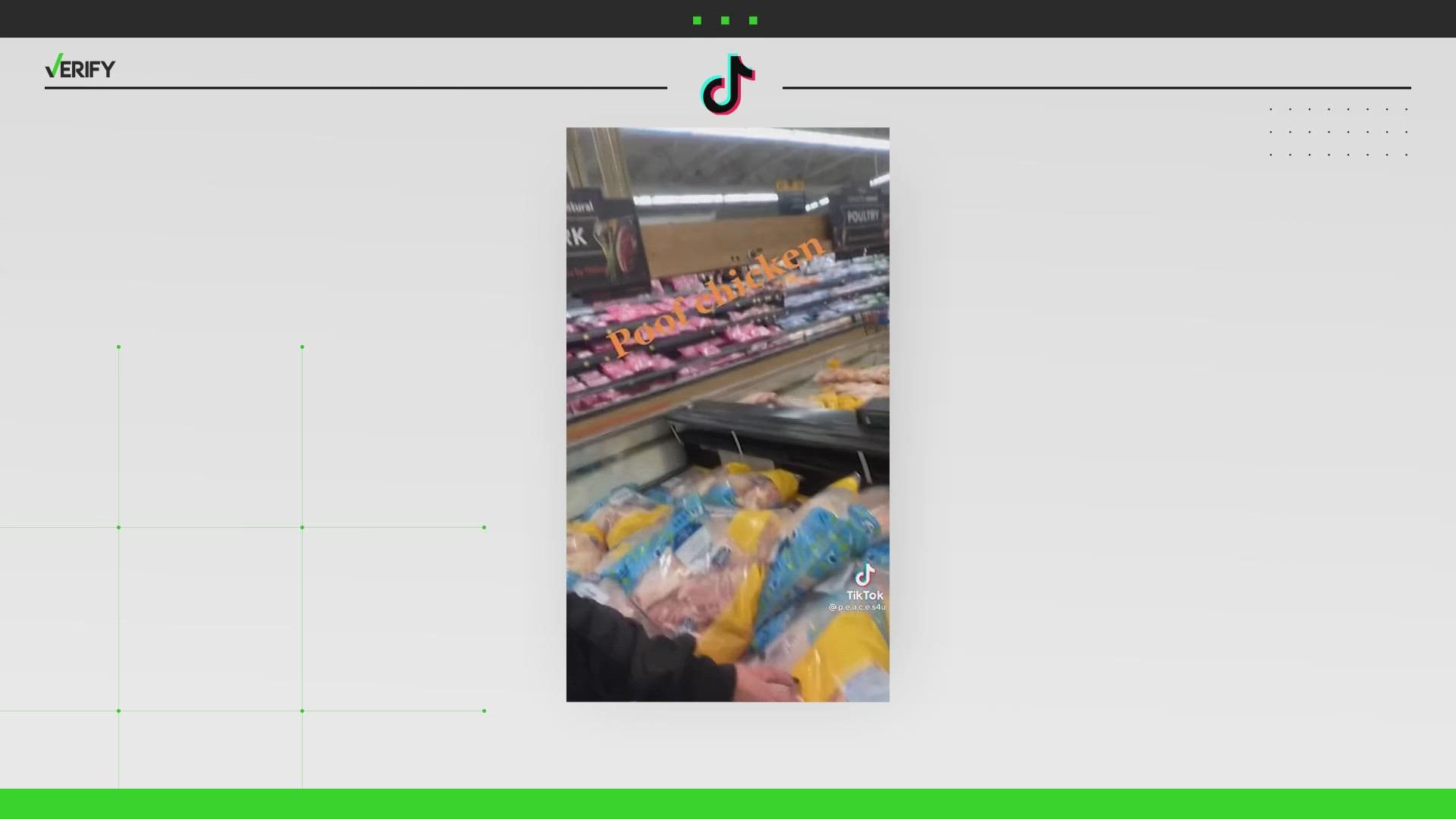In a TikTok video titled “poof chicken” that has more than two million likes, a person claimed puffed-up bags of frozen chicken pieces, like those from their local grocery store, are a sign the chicken inside is spoiled.
People added to her claims as the video spread on other social media platforms. One Twitter user, in a post liked almost 100,000 times, added: “When flesh deteriorates, it releases gas,” the user said. “The bag is full of that meat ‘expiring’ past healthy consumption.”
THE QUESTION
Does frozen chicken in puffed-up packaging mean the meat is spoiled?
THE SOURCES
- Perdue Foods
- National Chicken Council
- United States Department of Agriculture (USDA)
- ScienceDirect, a database of scientific studies and journals
THE ANSWER
No, a puffed-up bag of frozen chicken doesn’t mean the poultry is spoiled. A USDA-approved method of packaging used by chicken processors can make the bag look puffy, which our sources say is an indicator the bag is properly sealed.
WHAT WE FOUND
The woman in the viral video is standing next to bags of Perdue chicken. Perdue sells its chicken in a variety of packaging, including frozen in bags. Packaging methods for meat and poultry must be approved by the United States Department of Agriculture (USDA).
A Perdue spokesperson said in an email that the puffiness of the bags do not indicate a food safety concern and is in fact caused by a normal, USDA-approved packaging process. The puffiness of the bags, the spokesperson said, actually indicates the packaging is properly sealed.
“The product is dropped into the bag, and sealer bars put pressure on the bag, which puffs the bag with ambient air,” the Perdue spokesperson said. “To say that the chicken is spoiled because of the puffiness of the bag is inaccurate. If the product was in fact spoiled, you would see discoloration (e.g., grey, green, etc.), smell an off odor, and potentially even see leaking.”
Another common method of meat and poultry packaging that can give products a puffy appearance is called “controlled atmosphere packaging,” in which the meat is placed in a gas-tight package with controlled amounts of oxygen, nitrogen and carbon dioxide. This is because certain gases, carbon dioxide in particular, inhibit the growth of spoilage bacteria and allow the products to last a bit longer before spoiling.
The National Chicken Council agreed that the frozen chicken packaging seen in the video is a USDA-approved process with no food safety concern.
“This is not any indicator of spoilage,” a National Chicken Council spokesperson said. “The best indicators of spoilage would be the Sell By or Use By date, discoloration, foul smell and/or leakage, not the particular packaging.”
A USDA page from 2019 explains a consumer can tell if chicken is spoiled by looking for changes in the poultry’s smell, taste or texture. It says meat or poultry may turn a dark color, smell badly and become slimy due to spoilage bacteria. It does not say anything about the packaging as an indicator of spoilage.
Given poultry processors often fill their packaging with gas to the point the bag appears puffy the moment it’s sealed, it isn’t an indicator the chicken inside the packaging is spoiled. It’s better to look at the color and texture of the chicken if the bag is transparent, and check the date on the packing if the bag isn’t transparent. Color, texture, smell and taste will typically make it apparent chicken is spoiled once it’s removed from the packaging.
More from VERIFY: Refrigerated Thanksgiving leftovers are safe to eat for 4 days

